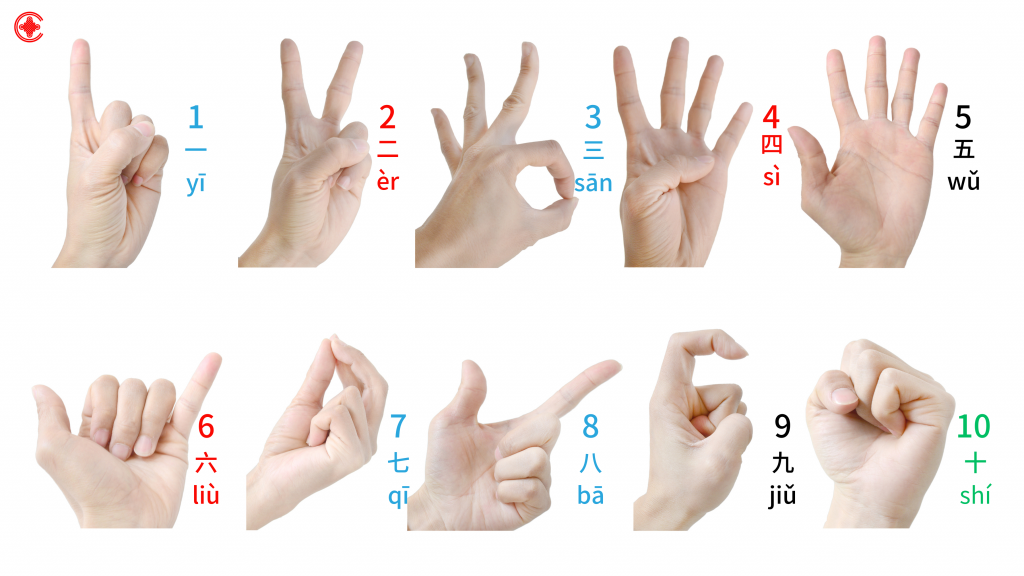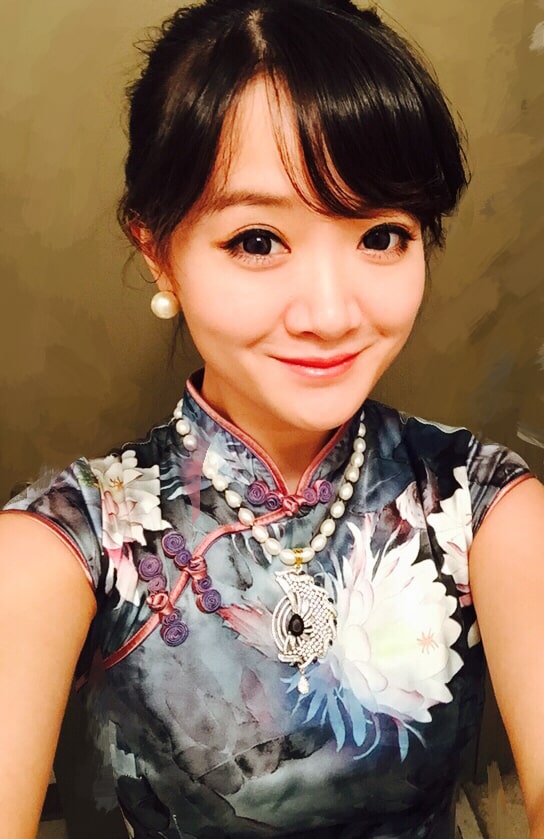Chinese Numbers: A Fascinating Guide to Beginners

The Beginner’s Guide to Chinese Numbers
Numbers are essential to every language — Mandarin Chinese included. In fact, counting is one of the first things babies learn as they start to make sense of the world.
Similarly, if you’re learning Chinese, numbers are a great place to start because they give you a simple entry point into this exciting new journey. Learn all about Chinese numbers, including how to count from 0 to 100, and use this knowledge daily.
Understanding the Chinese Number System
Learning to count in Chinese is much more straightforward than expected. China uses the same number system that most countries do. However, every digit can also be written as a Chinese character, which you may sometimes see in place of the numeral. The concept of Chinese numbers is simplified into an easily digestible system:
- Numbers 1 through 10 all have one character.
- Numbers 11 through 19 all have the word for 10 (十, shí) added before the second digit. For example, 17 is written as 十七 (shí qī).
- Numbers 20 through 90 are all expressed as a multiple of 10. For example, 20 would be two-ten (二十, èr shí), while 50 would be five-ten (五十, wŭ shí).
- If you want to express numbers 21–29, 31–39, and so on, you add the final digit to the end. For example, 23 would be two-ten-three (二十三, èr shí sān).
- The word for hundred is 百 (băi). Generally, counting above 100 works the same way as counting to 20. That is, 一百 (yì băi) is 100, while 一百三十 (yì băi sān shí) is 130.
- However, for the numbers 101 through 109, you should add the word for zero (零, líng) before the last digit. Thus, 103 is 一百零三 (yì băi líng sān).
All items in Chinese numerology have “measure words” that let the receiver know what you are referring to. For example, the Chinese word for noodles is 面 (miàn). A measure word that pairs with food items like noodles is 份 (fèn). If you wanted to ask for one portion of noodles, you would say: 一份面 (yì fèn miàn). If you simply said 一面 (yí miàn), your request would not make sense. When speaking about specific numbers of items, you usually need the measure words to clarify the context.
Also, when learning Chinese numbers, pinyin (the phonetic system that transcribes Chinese characters to the Latin alphabet) can help you learn to pronounce each word correctly. It’s wise to use it as a guide.
Chinese Numbers 1–10
The best place to start learning the Chinese number system is to start with the basics. Here are the characters and pinyin transcriptions for numbers one through 10.
| Number | Character | Pinyin |
| 0 | 零 / 〇 | líng |
| 1 | 一 | yī |
| 2 | 二 | èr |
| 3 | 三 | sān |
| 4 | 四 | sì |
| 5 | 五 | wǔ |
| 6 | 六 | liù |
| 7 | 七 | qī |
| 8 | 八 | bā |
| 9 | 九 | jiǔ |
| 10 | 十 | shí |
Now you will move on to more complex numbers. As you do, keep in mind the rules you previously learned.
Chinese Numbers 11–100
This is where you need to start applying a few rules. Remember that numbers 20–99 are all expressed as multiples of 10 with the appropriate numerals added to the front and back of the word.
| Number | Character | Pinyin |
| 11 | 十一 | shí yī |
| 12 | 十二 | shí èr |
| 13 | 十三 | shí sān |
| 14 | 十四 | shí sì |
| 15 | 十五 | shí wǔ |
| 16 | 十六 | shí liù |
| 17 | 十七 | shí qī |
| 18 | 十八 | shí bā |
| 19 | 十九 | shí jiǔ |
| 20 | 二十 | èr shí |
| 21 | 二十一 | èr shí yī |
| 22 | 二十二 | èr shí èr |
| 23 | 二十三 | èr shí sān |
| 29 | 二十九 | èr shí jiŭ |
| 30 | 三十 | sān shí |
| 31 | 三十一 | sān shí yī |
| 32 | 三十二 | sān shí èr |
| 45 | 四十五 | sì shí wŭ |
| 57 | 五十七 | wŭ shí qī |
| 69 | 六十九 | liù shí jiŭ |
| 72 | 七十二 | qī shí èr |
| 85 | 八十五 | bā shí wŭ |
| 99 | 九十八 | jiŭ shí bā |
| 100 | 一百 | yì bǎi |
Don’t just memorize these Chinese numbers, symbols, and pinyin. The best thing you can do is learn to put them to use.
How to Use Chinese Numbers
The primary reason to learn any unfamiliar language is to use your newfound knowledge to communicate with others in a real-world context. While figuring out the characters and pinyin for Chinese numbers 1-100 can be fun, there is much more you can do with Chinese numbers.
Over the following sections, you’ll learn how to use Chinese numbers translations in practical ways, including telling others about your birthday and other important events, sharing your age, giving someone your phone number, measuring substances, and finger-counting.
Age
生日快乐 — shēng rì kuài lè
This is one of the ways you can say “Happy Birthday” in Chinese. Depending on the circumstances, there may be a follow-up question about your age. You may hear it one of two ways, with the latter primarily said to teenagers and young children:
- 你多大? — Nǐ duō dà?
- 你几岁? — Nǐ jǐ suì?
This part should be easy once you have learned Chinese numbers from 1 to 100. Simply say “I” (我, wǒ) before the number. Then, you’ll place the word for years of age (岁, suì) after the number. When you put the phrase together, you say, “I [number] years old.” For example:
- 我九岁 — Wǒ jiǔ suì (I am 9 years old)
- 我三十九岁 – Wǒ sān shí jiǔ suì (I am 39 years old)
- 我九十九岁 – Wǒ jiǔ shí jiǔ suì (I am 99 years old)
You should always wait for someone to ask your age. Now, when they do, you’ll be able to answer with confidence.
Dates
How do you respond when someone asks about your birthday or the date of another important event? First, you’ll need to become familiar with a few vocabulary words:
| Word | Pinyin | Meaning |
| 年 | nián | year |
| 月 | yuè | month |
| 日 (formal) | rì | day of month |
| 号 (conversational) | hào | day of month |
When you are giving the date in Chinese, you will do so in this order: year, month, and day of month. That means that November 24, 1986, would be written this way:
- 86年11月24号 — Bā liù nián, shí yī yuè, èr shí sì hào
Note that in a similar fashion to American English, you can simply use the last two digits of your birth year instead of writing out all four numbers.
Measurements
Before you dive into measurements in Chinese, it’s essential to know that China uses the metric system and has done so since February 1929. If you come from a country where you are used to using the imperial system, which measures in feet, inches, pounds, and miles, you’ll need to mentally switch gears to fully understand Chinese measurements.
Weight
Weight in Chinese is written as 重量 (zhòng liàng). When it comes to measuring weight, you need to know two critical measurements:
- 斤 — jīn
- 两 — liǎng
These measurements are seen primarily in markets; for example, prices for items like tea are often advertised using 斤 and 两. A few equivalencies you need to know to understand this system include:
- 1 两 (liǎng) = 50 grams
- 1 斤 (jīn) = 10 两 or 500 grams
Many of the words used to describe measurements are based on traditional Chinese units. If you’re looking for some of the more familiar metric measurements, here’s a table to help you out:
| Measurement | Word | Pinyin |
| gram | 克 | kè |
| milligram | 毫克 | háo kè |
| kilogram | 公斤 | gōng jīn |
| ton | 吨 | dūn |
| pound | 镑 | bàng |
| ounce | 盎司 | àng sī |
Height & Length
Height in Chinese is written as 高度 (gāo dù). Regarding height and length, China has a system similar to measuring weight. For example, 2 里 (lǐ) means 1 kilometer, and 3 尺 (chǐ) is 1 meter. However, these measurements are rarely used today in practical ways. Road signs and other essential items are more likely to simply use the metric measurement.
Are you seeking guidance on writing and pronouncing some height and length measurements you may already know? This table can point you in the right direction.
| Measurement | Word | Pinyin |
| length | 长, 长度 | cháng, cháng dù |
| width | 宽度 | kuān dù |
| meter | 米 | mǐ |
| millimeter | 毫米 | háo mǐ |
| centimeter | 厘米 | lí mǐ |
| kilometer | 公里 | gōng lǐ |
| mile | 英里 | yīng lǐ |
| inch | 英寸 | yīng cùn |
| foot | 英尺 | yīng chǐ |
| yard | 码 | mǎ |
Volume, Capacity, & Area
The word for volume (capacity) is 容量 (róng liàng), and the term used for area is 面积 (miàn jī). A few volume and area-related terms you may recognize include:
| Measurement | Word | Pinyin |
| depth | 深度 | shēn dù |
| liter | 升 | shēng |
| gallon | 加仑 | jiā lún |
| square meter | 平方米 | píng fāng mǐ |
Other Measurements
Here are the Chinese words for a few other measurements you may find helpful. Take a look to see which ones you already recognize.
| Measurement | Word | Pinyin |
| degree | 度 | dù |
| volt | 伏, 伏特 | fú, fú tè |
| horsepower | 马力 | mǎ lì |
| quantity | 数量 | shù liàng |
| a little bit of … | 一点 | yì diǎn |
| half | 一半 | yí bàn |
| dozen | 一打 | yì dá |
| scale (on a map) | 比例 | bǐ lì |
| piece | 个 | gè |
| size | 大小 | dà xiǎo |
| the smallest | 最小的 | zuì xiǎo de |
| medium | 中等的 | zhōng děng de |
| the largest | 最大的 | zuì dà de |
Next, you’ll learn how to give someone your phone number in Chinese.
Phone Numbers
If you’re used to grouping numbers together when you tell someone your phone number, you’ll have to drop that practice when you speak Chinese. There are no worries about emphasizing area codes or the first three or last four digits of your phone number. Instead, just say the numbers in order. For example, if your phone number is 12345678987, you would simply say “yāo, èr, sān, sì, wǔ, liù, qī, bā, jiǔ, bā, qī.”
Notice something a little different? That’s because 幺 (yāo) is usually used instead of 一 (yī) when giving out a phone number. That prevents confusion with the number 7 (qī) in speech.
Finger Counting
One fun fact is that numbers 1 through 10 can be communicated with just one hand in Chinese. In contrast, English speakers must use two hands for numbers 6 through 10. Learning the hand symbols for each number can help you communicate when you’re having trouble understanding someone or can’t make use of your other hand.
Tips for Learning Chinese Numbers
A few tips to help you nail down your Chinese numbers include:
- Try learning Chinese numbers through song or another form of entertainment
- Don’t do it alone! Instead, make it a point to practice with others who are also learning
- Practice what you know in a variety of settings, including grocery stores, restaurants, retail stores, or even at work (when appropriate, of course)
- Incorporate multidimensional learning to learn through a few different mediums, including videos, flashcards, and Chinese numbers worksheets
When you employ these tips and tricks, you’ll have more fun, and it’s more likely that the information will stick.
Learn Chinese With NewConcept Education
Learning a new language can be daunting, but having the right system in place will make all the difference. Instead of trying to piece together the information you’ve found in other resources, consider taking an online class where you can learn from an experienced teacher and practice a Chinese numbers activity or two with classmates after the same goal.
Whether learning a new language for business purposes or simply expanding your horizons, NewConcept Education offers an exciting curriculum, a collaborative learning community, and a proven system that can help you learn Mandarin Chinese up to three times faster than the average program.
Sign up for our classes and discover a fun way to learn Mandarin Chinese.



